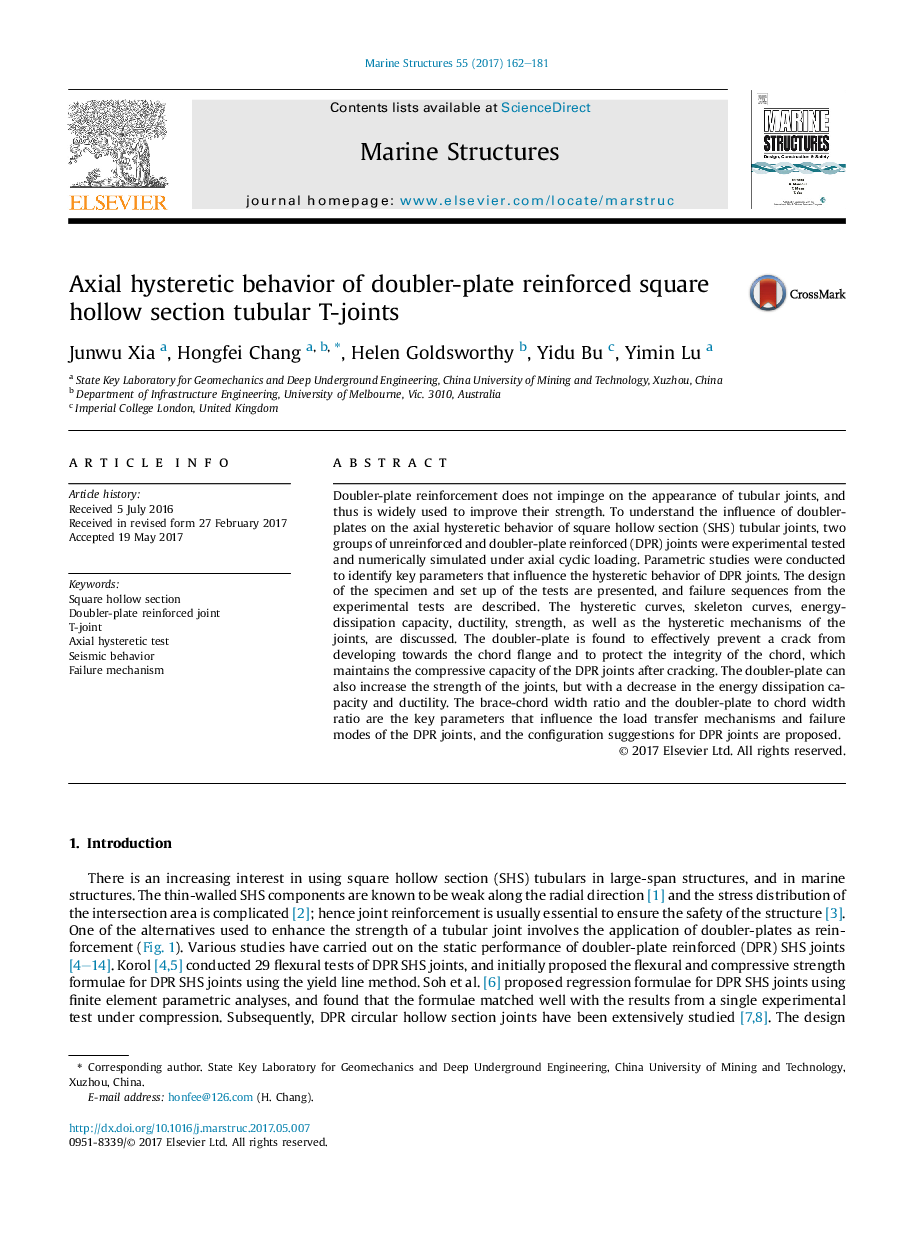| Article ID | Journal | Published Year | Pages | File Type |
|---|---|---|---|---|
| 4925039 | Marine Structures | 2017 | 20 Pages |
Abstract
Doubler-plate reinforcement does not impinge on the appearance of tubular joints, and thus is widely used to improve their strength. To understand the influence of doubler-plates on the axial hysteretic behavior of square hollow section (SHS) tubular joints, two groups of unreinforced and doubler-plate reinforced (DPR) joints were experimental tested and numerically simulated under axial cyclic loading. Parametric studies were conducted to identify key parameters that influence the hysteretic behavior of DPR joints. The design of the specimen and set up of the tests are presented, and failure sequences from the experimental tests are described. The hysteretic curves, skeleton curves, energy-dissipation capacity, ductility, strength, as well as the hysteretic mechanisms of the joints, are discussed. The doubler-plate is found to effectively prevent a crack from developing towards the chord flange and to protect the integrity of the chord, which maintains the compressive capacity of the DPR joints after cracking. The doubler-plate can also increase the strength of the joints, but with a decrease in the energy dissipation capacity and ductility. The brace-chord width ratio and the doubler-plate to chord width ratio are the key parameters that influence the load transfer mechanisms and failure modes of the DPR joints, and the configuration suggestions for DPR joints are proposed.
Related Topics
Physical Sciences and Engineering
Engineering
Civil and Structural Engineering
Authors
Junwu Xia, Hongfei Chang, Helen Goldsworthy, Yidu Bu, Yimin Lu,
